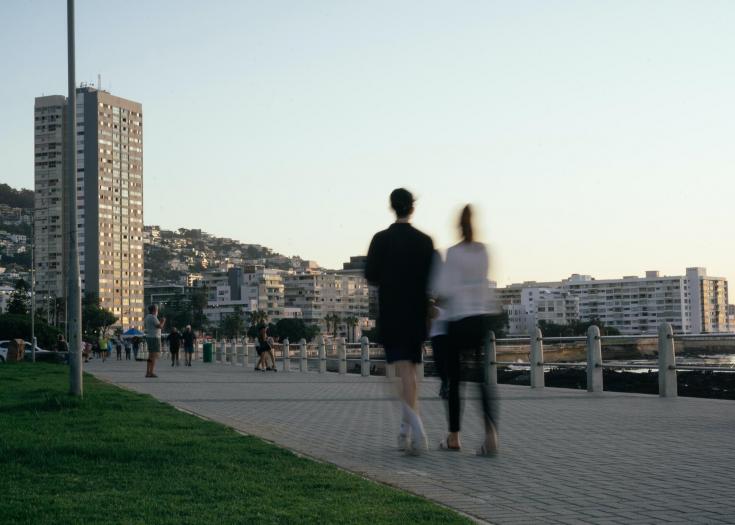RESOLVE: Reducing the carbon intensity of retail

The retail sector is of utmost importance to Europe’s economy, accounting for more than 3.5 million businesses, around 19 million jobs and 450 billion EUR of value added. However, the sector faces challenges in relation to the rise of online shopping and the need to tackle carbon emissions. Almost all goods are transported to stores by motorized vehicles, and around 65% of shopping trips in the EU are made by private car.
The reliance on motor vehicles for the retail sector can be seen in the high resistance that is often encountered by public authorities when pedestrianisation is proposed, with business owners afraid that limitations placed on motor vehicle access will lead to revenue falls. Whilst available evidence suggests that pedestrianisation actually leads to economic growth and higher footfall, accessibility to retail areas must still be considered.
As urban authorities seek to reduce carbon emissions from motor vehicle use, there is a need for identifying solutions that can reduce motor vehicle use whilst supporting accessibility for shoppers, suppliers and waste managers. The RESOLVE project, led by the City of Roermond (The Netherlands), has explored the issue of low-carbon retail, identifying good practices and developing action plans for each of its partner regions.
'Roermond is a real retail city. With the presence of the Designer Outlet Centre, which attracts eight million visitors a year, and a historic city centre, the city has a challenge to remain accessible and liveable,' explained Paul Hamaekers of Roermond Municipality. 'Within RESOLVE, we wanted to work with other cities facing similar challenges, and learn from successful concepts and good practices, to influence sustainable mobility policy.'
As part of their project, RESOLVE partners have explored and shared proven good practices from across Europe to reduce the carbon intensity of retail.
Low-carbon, last-mile delivery
CityPorto is a freight distribution service with an urban consolidation centre, and a fleet of low-polluting vehicles in Padua, Italy. The city had introduced a low-carbon zone in the city, aiming to reduce congestion by restricting access for polluting vehicles. The CityPorto transit point is located two miles from the city centre, near major highways, for easy drop-off by freight transport vehicles. Here, an IT system optimises deliveries, and freight intended for multiple shops is loaded into low-carbon vehicles to complete the last mile. By 2015, CityPorto was managing 100,000 deliveries annually, drastically reducing the number of freight vehicles in the city centre.
In a similar vein, the city of Maribor (Slovenia), has set rules for the city centre allowing access only for electric vehicles operated by the post office between 10am and 8pm. To ensure that shops and restaurants were not adversely affected, a consultation was launched, resulting in a social enterprise being established to provide last-mile delivery by cargo bikes. The practice has resulted in less traffic in the city centre, with fewer carbon emissions and better organised deliveries.
Harmonising retail waste collection
As well as delivery, stores must also take special measures for dealing with their waste. Bond Street, the famous shopping street in London, suffers from high levels of congestion and pollutants from commercial vehicles handling deliveries and servicing. The New West End Company, a partnership of 600 retailers and businesses in the West End of London, working with Westminster Council launched a Bond Street Strategy to reduce vehicle access.
A first stage involved reducing the number of waste management companies servicing the street. Two companies were selected as preferred suppliers (from an initial 47 companies servicing the street), and by 2015, 75% of companies had switch to one of these two providers, enabling harmonised waste pick-up. This reduced the number of waste management vehicles from 144 to 9 per day and resulted in a 72% reduction in CO2.
Easy low-carbon transport for shoppers
Additional to the need to reduce service and delivery vehicles, cities also need to reduce the number of vehicles driven by shoppers themselves. Reggio-Emilia (Italy) has tried, since 2008, to reorganise its city centre travel. As part of this, there have been limitations to the number of parking spaces in the city, and the introduction of a park and ride. Drivers are encouraged to leave their vehicles at one of seven park and ride locations and take a free shuttle bus to the shopping district and back, thus reducing the number of private vehicles in the city.
In order to ensure that people with more limited mobility are not affected by pedestrianisation, Maribor has invested in mini electric vehicles that can take individuals, for free, between shops, restaurants and other locations. It can be ordered in advance or hailed in the street.
Action Plans for improving partner regions
As a result of the RESOLVE project and exchange of good practice, each region has established an action plan, intended to guide implementation of new measures and lessons learned.
'We want visitors to make smart choices in their trip to Roermond. This means we have to offer alternative modes of transport in order to reduce retail-related car use, and inspiration from sharing practices and experience has fed into our Action Plan,' said Paul Hamaekers.
Building upon the proven solutions, some of the most innovative measures in the action plans include Roermond’s intention to set up a new 'park and bike' system, whereby people can park on the city outskirts and take a rental bike to shopping districts, Warsaw’s proposed campaign for sustainable purchasing and Manchester’s intention for personalised travel plans for residents. Additionally, both Manchester and Maribor have received approval for pilot actions to implement 'parklets', reclaiming street parking spaces for terraces and bike parking.
For more information, check out the RESOLVE project website, and its
